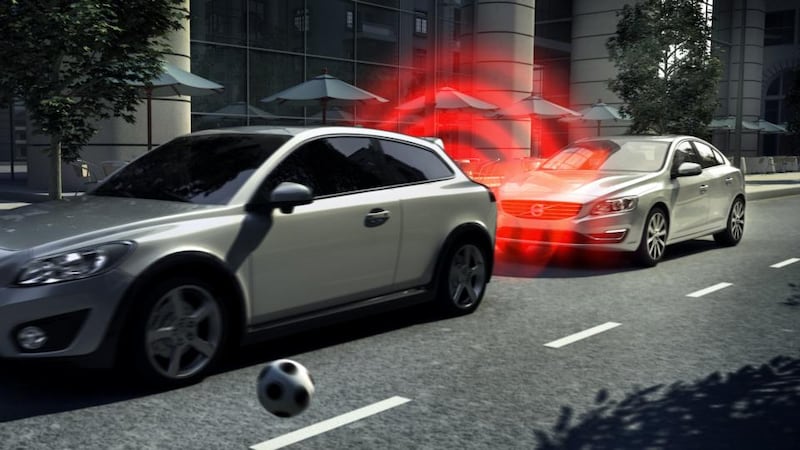Two years ago Volvo made the astounding claim that, by the year 2020, no-one driving one of its products would ever be seriously hurt or killed in an accident. Think about that for a moment.
A guarantee that, if you drive a Volvo, you will be 100 per cent safe from the type of accident which is statistically inevitable for many road users. Even in a relatively small, not very densely populated, temperate island nation like Ireland, the variables seem too immense to contemplate seriously eradicating the possibility of serious injury.
Not so, says Eric Coelingh, technical head of Volvo's active safety systems, and one of the company's safety experts.

“Well, we did not just decide today to have this mission,” he says. “We have a very long history of safety at Volvo cars, and over very many years we have collected data about traffic accidents, what happens and also why they occur. That started in the beginning of the 1970s and we’ve seen that by analysing traffic accidents, we have been able to improve the safety of the cars over time. So if you look at the risk of getting injured in a Volvo car today, it’s much, much lower than it was in the 1970s. We have a process, a way of working, of improving the cars, and we can see that it makes a real difference, a big difference, for real people in real cars in the real world.”
He adds: “When we look at the trend , we are targeting the point where the risk of getting injured is really, really low. But when you start to define a mission, a figure of ‘really, really low’ is just not good enough, is it? So the number we’re heading for is zero and we will not stop our efforts until we get there.
“As for controlling variables, that’s difficult. Previously, the variables were all about bio-mechanics and protecting in case you are in an accident. These days, we look at very many more variables and dealing with why accidents occur at all. And a very severe accident can sometimes be avoided by a very simple action. We try to tackle them one after another. So, looking at the data, we’re on the way to meeting our mission.”
Effort needed
Coelingh admits that it's not just about vehicle design and systems – there also needs to be a similar level of effort on the parts of legislators and road builders. "In Sweden, we study together with the Swedish road authorities, and we try to look at the various accidents that happen and why they happen. What can be dealt with by infrastructure, and what can be dealt with by a car-maker? So, for example, if you have two-lane roads, with oncoming traffic, and a speed limit of, for instance, 90km/h, then dealing with a head-on collision there is very difficult from the passive safety side; it's almost impossible. The violence is so high. But lots of those problems can be tackled if there is a separator between the two lanes. So the authorities in Sweden are investing a lot of money in putting in these separators. When you view the end result, the likelihood of injuries on that type of road is much lower. In the same way, we're looking at how to set speed limits, look at enforcement etc.
“So, together with the Swedish road authorities, we’re trying to understand infrastructure, understand the cars and how those two work together. We’re very lucky to live in a country where a Vision Zero has been defined.”
Lucky indeed. But given that Ireland and others are not quite in that realm of expectation, surely the only way to make good on the 2020 promise is to simply take the driver out of the equation altogether? Follow Google’s lead and let the computers take over?
Human behaviour
Again, Coelingh disagrees. "Taking away the human brain is not the right approach. We have a lot of people who are human behaviour experts. They try to understand how humans behave in these situations. We try to make sure that the driver has the right information, that they are fit to drive, feel comfortable in the car and so on, because all of these aspects have a role to play. An alert and fit driver is capable of dealing with any upcoming situation, so it's not about taking out the driver, it's about making sure the driver is well informed and fit to drive."












